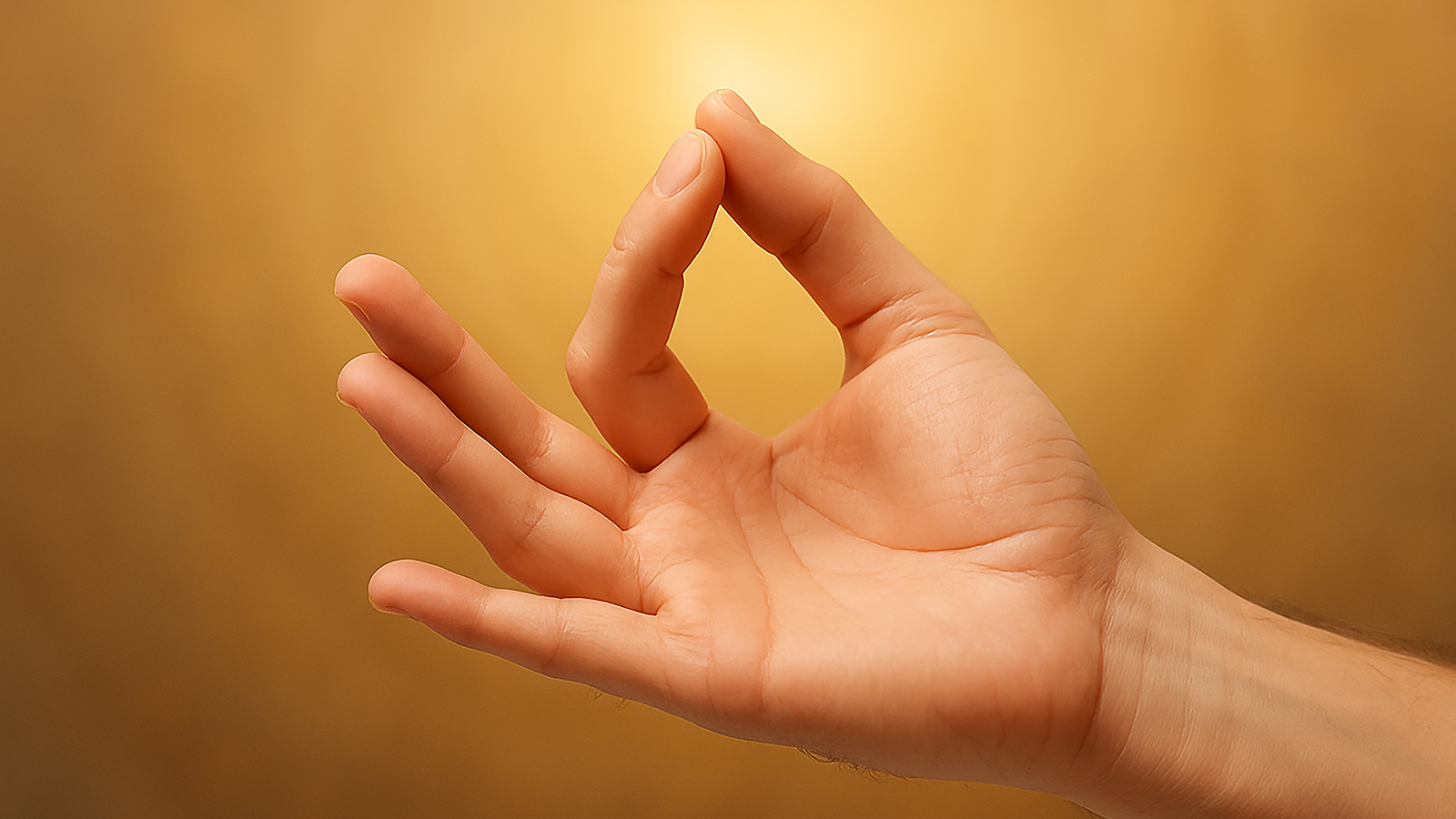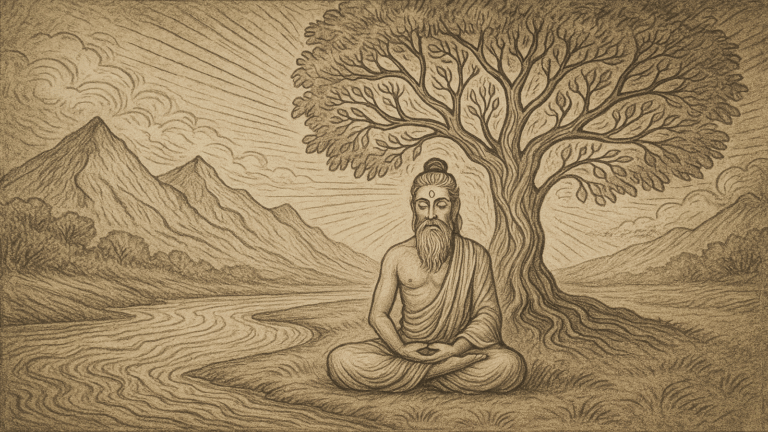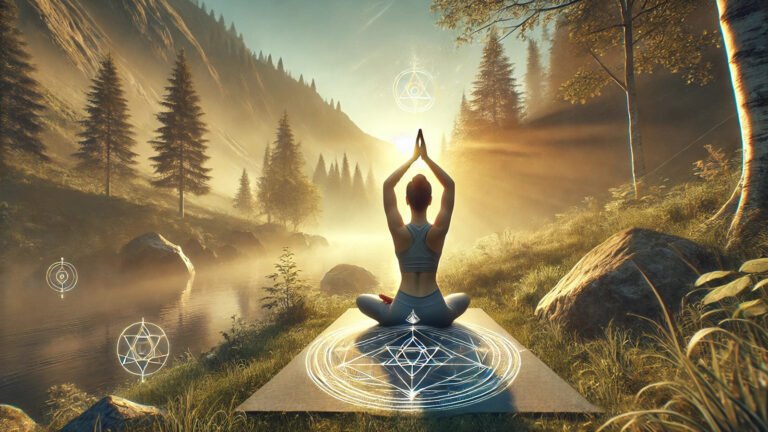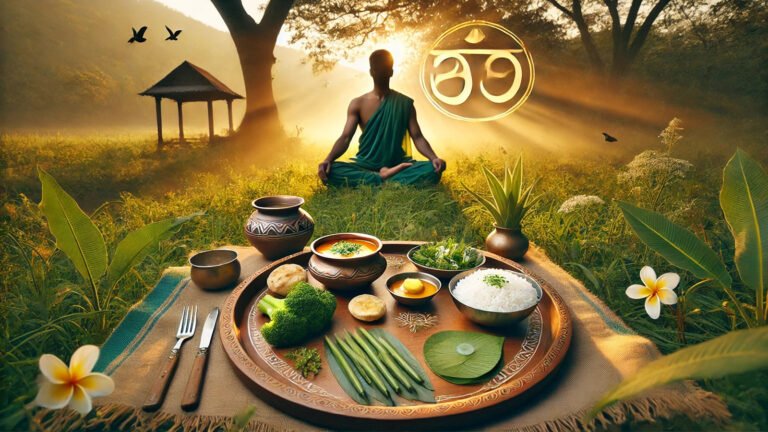In the silent stillness of yogic practice, when the breath becomes subtle and the mind begins to withdraw from the world, something remarkable happens.
The hands begin to speak.
They speak not through sound, but through sacred gestures — Mudras — that seal the energy, awaken the pranic flow, and invoke the deepest realms of spiritual consciousness.
In the world of Yoga, Mudras are not just symbolic hand postures — they are powerful inner technologies. Simple in appearance, yet vast in their effect, Mudras are like spiritual switches that redirect the body’s energy toward healing, clarity, and divine union.
Let us journey into the ancient science of Mudras, where gesture becomes grace, and movement becomes mantra.
— Meaning of the Word “Mudra —
The word Mudra (मुद्रा) is a compound of two Sanskrit roots:
“mud” – meaning bliss, joy, or delight
“ra” – meaning to give, to bestow
Together, Mudra means “that which bestows bliss”, or more precisely, “a seal or gesture that channels inner joy and divine energy.”
In yogic context, a Mudra is a seal, gesture, or energetic lock — used to channel prana, awaken the subtle body, and transform consciousness.
— The Origins of Mudra Science —
The origin of Mudras is ancient — older than written language and deeply rooted in the spiritual practices of the Rishis, the rituals of the Vedas, and the subtle science of Tantra.
Though often associated with hand gestures, Mudras were originally understood as gestures of consciousness — involving not just the hands, but the entire being: the breath, the gaze, the mind, and the soul’s intention.
Long before they were codified in texts, Mudras were practiced in meditative silence by seers who understood the human body as a divine yantra — a sacred instrument through which energy could be tuned and consciousness refined.
They were used:
In Vedic rituals, to invoke deities and hold mantras in the body
In Tantric worship, to awaken Shakti and merge with Shiva
In Yogic sadhana, to direct Kundalini upward through the Sushumna
These gestures were never mere physical acts. They were inner keys that unlocked layers of perception, energy, and ultimately, the experience of oneness with the Infinite.
— Scriptural References and Classical Importance —
The Hatha Yoga Pradipika, one of the most authoritative yogic texts written by Swami Swatmarama, dedicates its entire third chapter to Mudras, referring to them as the crowning practices of accomplished Yogis.
“Mudrāḥ siddhānām mukhyāṅgāni dehāvasthāsu durlabhāḥ।
tāsām abhyāsa-yogena sarvaṃ dehaṃ susiddhyati॥”
(Hatha Yoga Pradipika 3.1)
Translation:
“Mudras are the most vital limbs of accomplished Yogis and are rare even among the gods. Through their constant practice, the entire body becomes divine.”
The Gheranda Samhita, another classical text, lists 25 Mudras, describing them as essential tools for pratyahara (withdrawal of senses) and dharana (one-pointed concentration) — both prerequisites for Samadhi.
In Tantric scriptures, Mudras form the subtle architecture of mantra sadhana and Kundalini arousal.
In Buddhism, they are used to represent the various stages of Buddha’s enlightenment and teachings.
In Jainism, they are seen as postures of surrender, detachment, and inner truth.
Thus, from Vedic fire rituals to yogic awakening, Mudras have been essential bridges between form and formlessness.
— The Energetic Science Behind Mudras —
In the subtle body (sukshma sharira), energy follows intention. And intention, when channeled through precise gestures, becomes transformative.
Each finger of the hand represents one of the Pancha Mahabhutas — the five great elements:
Thumb – Agni (Fire)
Index finger – Vayu (Air)
Middle finger – Akasha (Ether)
Ring finger – Prithvi (Earth)
Little finger – Jala (Water)
By touching, pressing, or joining specific fingers, Mudras form energetic circuits that:
Balance the elements within the body
Harmonize Vata, Pitta, Kapha (Ayurvedic doshas)
Stimulate the nervous and endocrine systems
Influence mental states, emotions, and intuition
Control and seal pranic movement during Pranayama and meditation
Unlike medicines or tools, Mudras require nothing external. They are performed with your own body — anywhere, anytime — and become spiritual instruments of healing and elevation.
— The Role of Mudras in Hatha Yoga —
In Hatha Yoga, the body is seen as a sacred vessel, and the goal is the union of prana (life-force) with apana (elimination force) — igniting the rise of Kundalini through the central channel Sushumna Nadi.
Mudras are central to this inner alchemy.
They are used in tandem with:
Asanas (to stabilize the body)
Bandhas (to lock the energy)
Pranayama (to purify the breath)
Mantras (to tune the mind)
When Mudras are added to this triad, the gross body gives way to the subtle, and the sadhak enters inner stillness.
Famous Mudras like:
Maha Mudra, Khechari, Yoni, and Viparitakarani
are directly linked to awakening Kundalini, preserving Amrit (divine nectar), and piercing the veil of Maya (illusion).
— Mystical and Spiritual Dimensions —
To the realized Yogis, Mudras are not gestures — they are states of being.
They are the language of awakened consciousness, often used in deep meditation, mantra chanting, and transcendental states. When performed with pure awareness, a Mudra can:
Still the mind instantly
Connect with divine archetypes
Invoke inner guidance
Open chakras
Shift karmic patterns
A single Mudra, held in meditation, can become a gateway to Samadhi, where the small self dissolves and the cosmic Self is revealed.
Yogic lore says that even the deities perform Mudras — not for show, but to transmit their energy into the world. Likewise, every practitioner who assumes a Mudra with reverence becomes an antenna of the divine frequency.
— Mudras in Everyday Practice —
While some Mudras are advanced and reserved for intense yogic sadhana, others — like Gyan Mudra, Pran Mudra, Apan Mudra, and Anjali Mudra — are simple enough for daily use.
They can be practiced:
During meditation or breathwork
While chanting mantras
Even during silent reflection or prayer
The real key is awareness. A Mudra held with a wandering mind becomes a posture.
But a Mudra held with presence becomes a path to the soul.
— Wrapping Up: The Hand That Awakens Heaven —
In every gesture lies a hidden intention.
In every Mudra lies a spiritual code.
The science of Mudras reminds us that the Divine is not far or external. It is encoded in our body, breath, and awareness.
With just a movement of the fingers and a quiet breath, we can seal the outer world and enter the sanctuary within.
When the hands rise in Mudra, the soul rises in remembrance.
And in that silence — Yoga begins.



